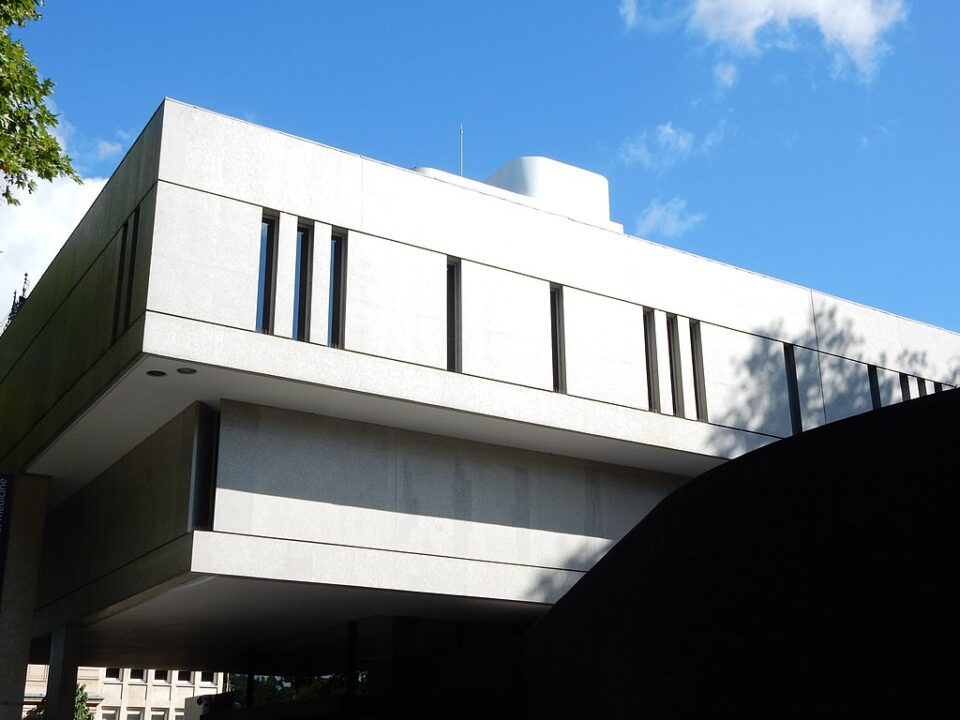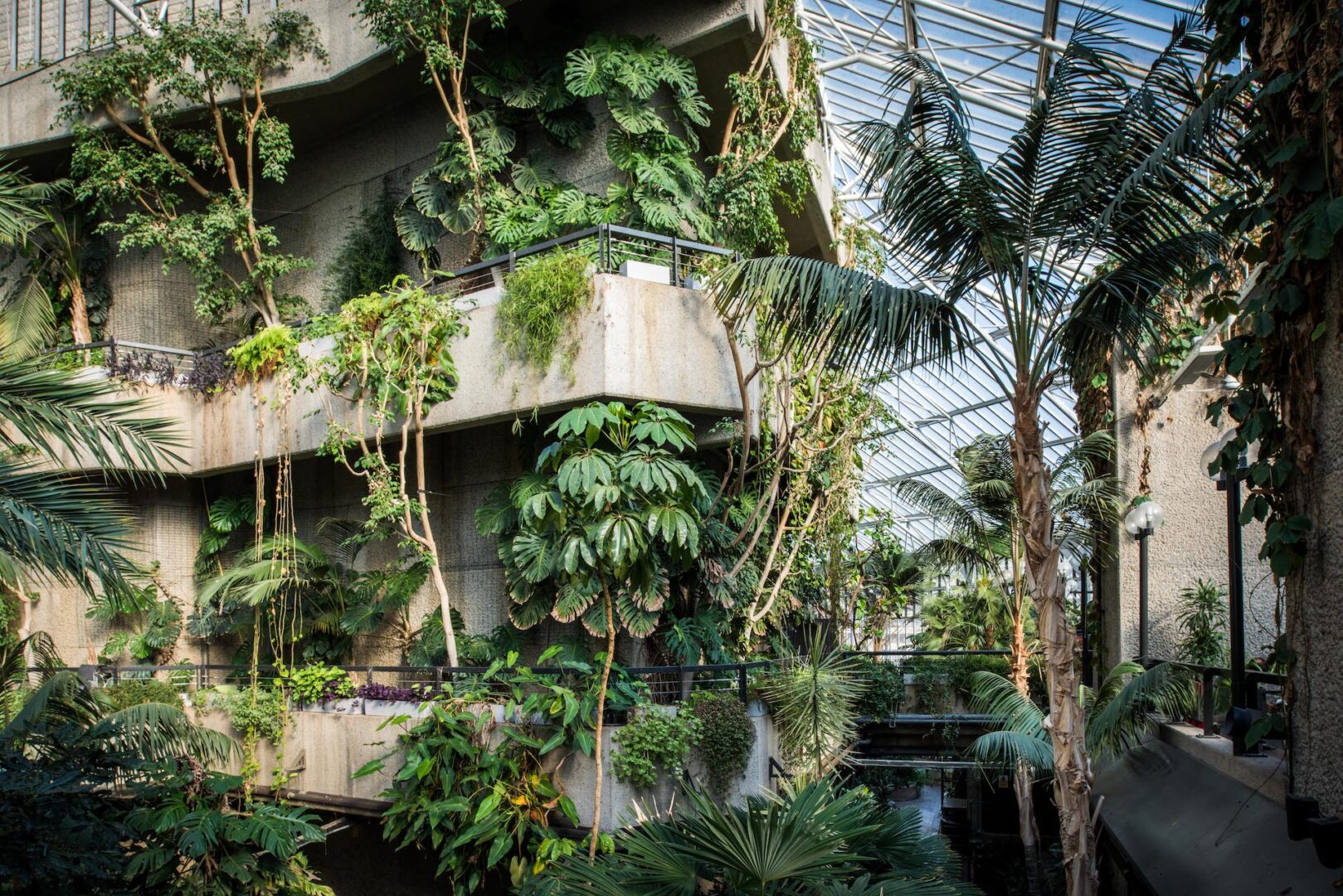The Barbican Centre, an icon of Brutalist architecture and cultural innovation, is undergoing a monumental redevelopment. This Grade II-listed building in the heart of London is set to receive an investment of £191 million and will be part of a transformative renewal project led by Allies and Morrison and Asif Khan Studio. This effort aims to preserve its architectural heritage whilst improving sustainability, accessibility and community engagement. The project will reuse existing spaces to minimise environmental impact, ensuring the Barbican remains a global cultural hub for future generations.
Inspired by the Barbican’s legacy and ongoing evolution, we’ve compiled a list of the top 10 Brutalist buildings in London, each a masterpiece of form and function with its own backstory.

Royal College of Physicians
Designed by Denys Lasdun and completed in 1964, this building in Regent’s Park is a Grade I-listed example of Brutalist design. It combines modernist principles with sensitivity to its historic surroundings. The building continues to serve as the headquarters for the Royal College of Physicians, hosting events, conferences, and educational activities.

Institute of Education
The Institute of Education in Bloomsbury, designed by Denys Lasdun and completed in 1977, features bold geometric forms and thoughtful functionality. Today, it is part of University College London, hosting educational research and training programs while standing as a striking example of Brutalist architecture’s adaptability for institutional use.

Trellick Tower
Designed by Ernő Goldfinger and completed in 1972, Trellick Tower in North Kensington is a 31-story residential block with a separate service tower. Originally polarising, it has since become a beloved architectural icon. Today, it remains a functioning residential space, housing diverse communities, and is celebrated for its stark, monolithic design that epitomises the Brutalist ethos.

National Theatre
Situated on the South Bank, the National Theatre was designed by Denys Lasdun and opened in 1976. Its layered concrete volumes create dramatic terraces and open spaces, making it both a cultural landmark and a sculptural work of art. The theatre continues to host world-class productions, serving as a hub for the performing arts in London.

Balfron Tower
Completed in 1967, Balfron Tower in Poplar is another masterwork by Ernő Goldfinger. It features communal living spaces, and a distinct service tower linked by aerial walkways. After a controversial refurbishment, the building now houses private residences, though its utopian vision for post-war housing remains a critical part of its legacy.

Hayward Gallery
Part of the Southbank Centre, the Hayward Gallery was designed by Hubert Bennett and the GLC Architecture Department, opening in 1968. Its angular concrete forms and dramatic exterior house temporary exhibitions of contemporary art, making it a vital part of London’s cultural landscape.

Barbican Estate
Designed by Chamberlin, Powell, and Bon and completed in 1976, the Barbican Estate is a Brutalist masterpiece encompassing residential towers, cultural venues, and public spaces. Today, it houses residents and serves as a cultural hub with the Barbican Centre, which hosts exhibitions, performances and film screenings.

Cromwell Tower
One of the three residential towers within the Barbican Estate, Cromwell Tower was completed in the 1970s by the same architects, Chamberlin, Powell, and Bon. It remains a sought-after residential address, known for its striking design and panoramic views of the city.

Alexandra Road Estate
Designed by Neave Brown and completed in 1978, this Camden estate is a remarkable example of high-density housing. Its terraced apartments, interwoven pathways, and communal spaces foster a strong sense of community. It remains a residential area and a testament to the potential of urban design to enhance social connectivity.

Robin Hood Gardens
Completed in 1972 by Alison and Peter Smithson, Robin Hood Gardens was a social housing project in East London featuring “streets in the sky.” Though partially demolished in 2017, its remaining structures and legacy have sparked debates about preserving Brutalist architecture. A portion is now part of the V&A Museum’s collection.
These buildings not only define London’s architectural landscape but also continue to shape the city’s cultural and communal experiences, embodying the bold visions of their creators.
Image Credits:
1. Barbican Conservatory, Photo by Max Colson.
2. Royal College of Physicians. Image by Ian Beales, Wikimedia Commons.
3. Institute of Education. Image by Mattbuck, Wikimedia Commons.
4. Trellick Tower. Image by Edwardx, Wikimedia Commons.
5. National Theatre. Image by Simone Hutsch, Unsplash.
6. Balfron Tower. Image by Cianboy, Wikimedia Commons.
7. Lee Bul at Hayward Gallery, Southbank Centre. Image: Morley Von Sternberg.
8. Barbican Centre. Photo by Dion Barrett.
9. Lakeside Terrace, Barbican Centre. Photo by Dion Barrett.
10. Alexandra Road Estate. Image by Stephen Richards, Wikimedia Commons.
11. Robin Hood Gardens. Image by stevecadman, Wikimedia Commons.





